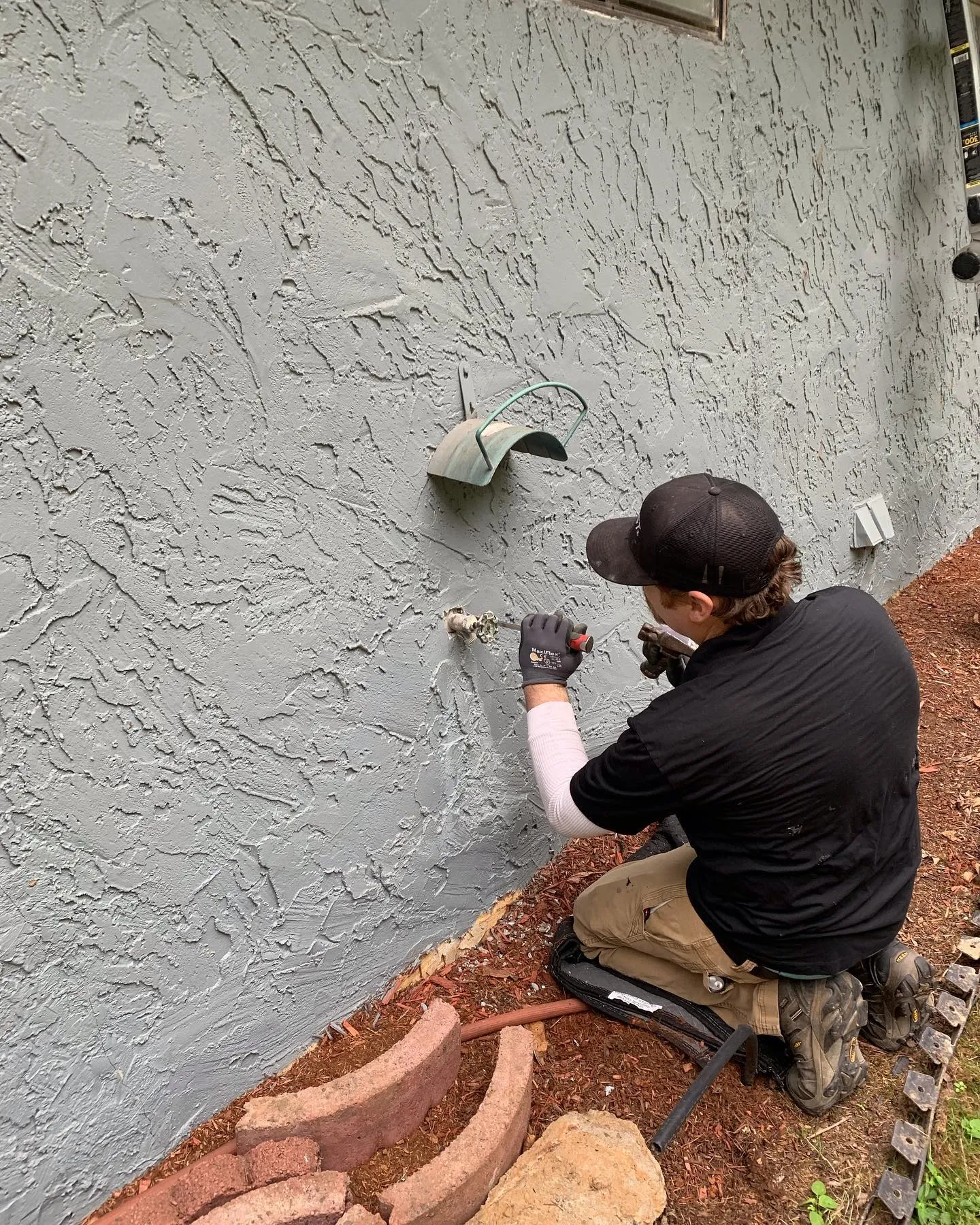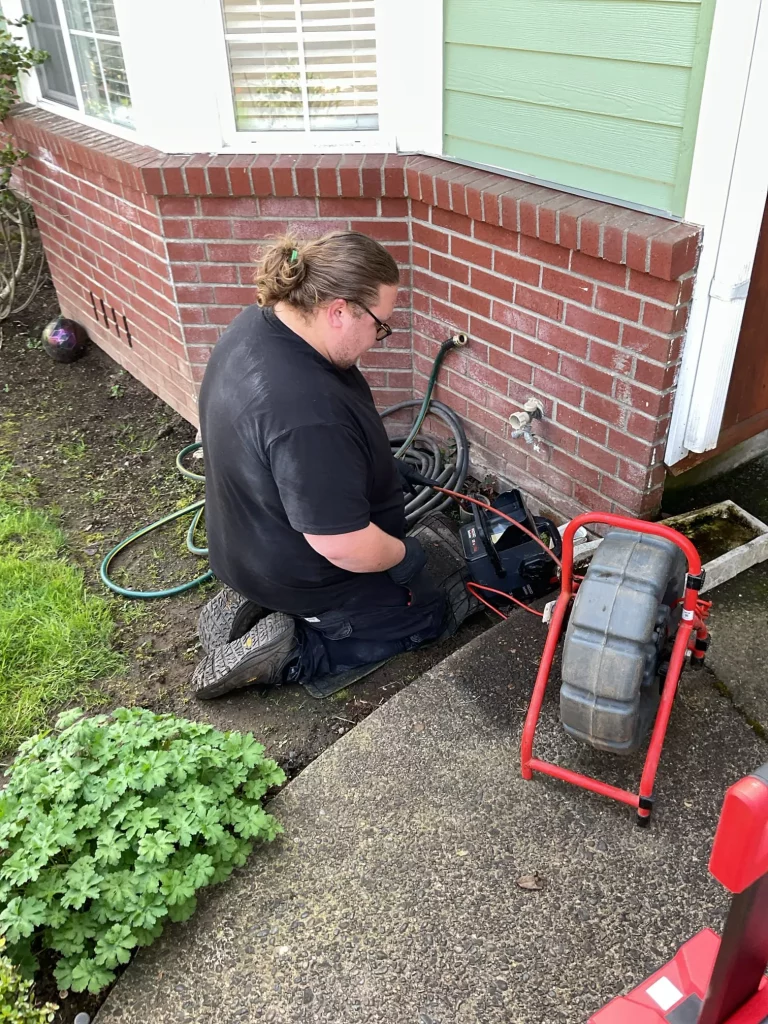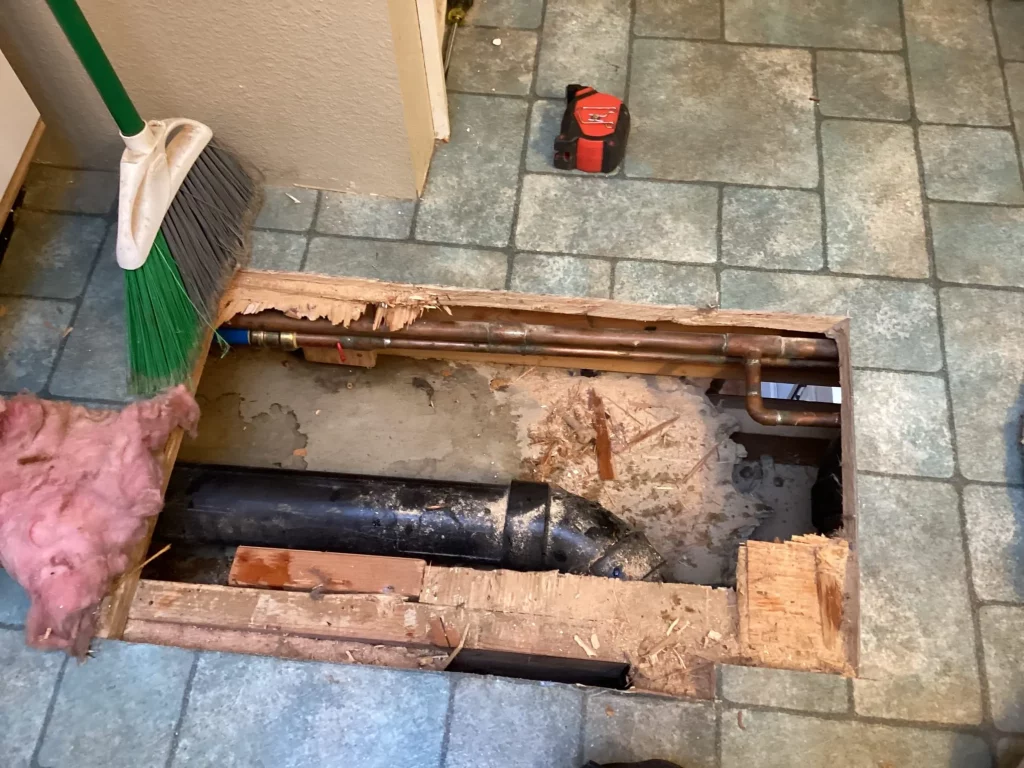
The constant drip of a leaky faucet, a surprisingly high water bill, and the energy drain from an old water heater are common frustrations that point to a larger issue: the environmental impact of our daily water use. While many of us want to live more sustainably, it can be hard to know where to start. Your home’s plumbing system, often overlooked, is one of the most effective places to make a meaningful difference by saving money, conserving a precious resource, and creating a smarter, more resilient home.
Drawing on years of hands-on experience, this guide details what works, what doesn’t, and how small changes can lead to significant results. This isn’t about a costly overnight overhaul, but rather about understanding the options available so you can make informed decisions that fit your budget and your home’s needs.
Here, you’ll find a complete roadmap to transforming your home’s plumbing system. We’ll cover everything from the simple, high-impact upgrades you can make this weekend to the advanced systems that can drastically reduce your environmental footprint. You will learn about:
By the end of this guide, you’ll have the knowledge to create a truly sustainable home, one fixture and one pipe at a time.
At its heart, eco-friendly plumbing is a thoughtful approach to the way we use and manage water in our homes. It focuses on three primary goals: reducing water consumption, decreasing the energy used to heat and deliver that water, and ensuring the water we send back into the system is as clean as possible. It’s a shift from a linear “use and dispose” model to a more circular, conservative mindset.
Making the switch to green plumbing has tangible benefits. On a personal level, it leads to lower utility bills month after month. The U.S. Environmental Protection Agency reports that the average family can save about $380 per year just by installing WaterSense-labeled fixtures and ENERGY STAR certified appliances. Over the lifetime of these products, the savings can add up to thousands of dollars.
From a broader perspective, the impact is even more significant. Reducing household water consumption eases the strain on municipal water supplies, which is especially important in drought-prone areas. Less energy used for water heating means a smaller carbon footprint. It’s a clear instance where what’s good for your wallet is also good for the planet.
The easiest and often most affordable place to start your eco-friendly plumbing journey is with your fixtures. These are the workhorses of your plumbing system, and upgrading them provides an immediate and measurable reduction in water use. Modern high-efficiency fixtures have been engineered to deliver excellent performance, so you don’t have to worry about sacrificing water pressure.
Toilets are the single largest source of water consumption inside the home, accounting for nearly 30% of an average household’s indoor water use. Older toilets can use as much as 6 gallons per flush (GPF). In contrast, modern high-efficiency toilets (HETs) use 1.28 GPF or less, a savings of over 60%.
Expert Tip: When choosing a low-flow toilet, look for the WaterSense label from the EPA. This certification ensures that the toilet meets strict efficiency and performance standards.
There are a few types of HETs to consider:
Here’s a quick comparison of toilet types:
| Toilet Type | Gallons Per Flush (GPF) | Key Feature | Best For |
|---|---|---|---|
| Old/Conventional | 3.5 to 6.0 GPF | N/A | Replacement/Upgrade |
| Standard Low-Flow | 1.6 GPF | Basic water savings | Meets federal standard |
| High-Efficiency (HET) | 1.28 GPF or less | WaterSense labeled | Excellent balance of savings and performance |
| Dual-Flush HET | ~0.8 GPF (liquid) / 1.28 GPF (solid) | User-selected flush volume | Maximizing water conservation |

After the toilet, the shower is the next biggest water user indoors. Standard showerheads use about 2.5 gallons per minute (GPM), while WaterSense-labeled models use 2.0 GPM or less. This can save a family thousands of gallons of water per year. Similarly, replacing old bathroom sink faucets with WaterSense models can reduce water flow by 30% or more without a noticeable difference in performance.
For homes with lawns or gardens, outdoor water use can be a significant part of the total household consumption. In fact, research from the U.S. Environmental Protection Agency’s WaterSense program shows that landscape irrigation accounts for nearly one-third of all residential water use nationwide, and in dry climates, it can be as high as 60 percent. Traditional sprinkler systems are often inefficient, wasting water through evaporation and runoff. Smart irrigation controllers, which act as a thermostat for your sprinkler system, use local weather and landscape conditions to tailor watering schedules. This ensures your plants get water only when they need it, potentially reducing outdoor water use by up to 50%.
Heating water is a major energy consumer. A conventional storage-tank water heater maintains a large tank of water at a constant high temperature, 24/7, leading to what’s called “standby heat loss.” Modern, sustainable water heating technologies are designed to eliminate this waste and operate much more efficiently.
Tankless water heaters, as the name suggests, don’t store water. Instead, they heat it instantly as it passes through the unit. When you turn on a hot water tap, cold water travels through a pipe into the unit where a gas burner or an electric element heats it on the spot.
Solar water heating systems use collectors, typically installed on a roof, to capture the sun’s thermal energy. This energy is then used to heat water that is stored in an insulated tank. While they do require a backup system (like a conventional tank or tankless heater) for cloudy days, they can provide a significant portion of a household’s hot water needs using clean, renewable energy.
Heat pump water heaters are a great high-efficiency option. They don’t generate heat directly. Instead, they work like a refrigerator in reverse, pulling heat from the surrounding air and transferring it to water in a storage tank. They use about 60% less electricity than standard electric resistance water heaters.
Expert Tip: Heat pump water heaters need to be installed in a location with adequate airflow, like a garage or a basement, as they pull heat from the air to function. They are not ideal for small, enclosed closets.
Key Takeaways: Choosing a Water Heater
A truly sustainable plumbing system isn’t just about efficient fixtures; it’s also about the infrastructure that supports them. This means addressing hidden leaks, choosing responsible piping materials, and exploring ways to reuse water.
Even a small drip can waste a surprising amount of water. According to the EPA, the average household’s leaks can account for nearly 10,000 gallons of water wasted every year. That’s the amount of water needed to wash 270 loads of laundry. Many of these leaks occur in hidden places, like behind walls or under slabs.
One of the best ways to check for hidden leaks is to read your water meter. Turn off all water-using appliances in your home, then check the meter reading. Wait two hours (without using any water) and check it again. If the reading has changed, you likely have a leak. Modern smart water monitors can also be installed to track your water usage in real-time and send alerts to your phone if a potential leak is detected.
The pipes in your home are the veins of your plumbing system. When building a new home or undertaking a major renovation, the choice of piping material can have a long-term environmental impact.
Greywater is the gently used water from your bathroom sinks, showers, tubs, and washing machines. It’s not safe to drink, but it’s perfectly suitable for tasks like watering plants or flushing toilets. A greywater recycling system filters this water and diverts it for these purposes. While more complex to install, these systems can reduce a household’s water usage by 30-50%, drastically lowering the demand on municipal water supplies.

For homeowners truly dedicated to creating a sustainable home, there are several advanced systems that can take water and energy conservation to the next level.
Rainwater harvesting is the practice of collecting and storing rainwater from your roof. Simple systems may consist of a single barrel connected to a downspout, providing water for a garden. More complex systems can involve large underground cisterns and pumps to supply water for toilets and laundry. This is an excellent way to get high-quality, free water for non-potable uses.
When it’s time to replace your dishwasher or washing machine, look for models with the ENERGY STAR label. These appliances are designed to be efficient in both their water and energy consumption. For example, an ENERGY STAR certified dishwasher can save an average of 3,870 gallons of water over its lifetime.
Expert Tip: When running your dishwasher or washing machine, always try to run full loads. This simple habit makes the most efficient use of the water and energy required for each cycle.
Once you’ve installed eco-friendly fixtures and systems, proper maintenance is key to ensuring they continue to operate efficiently for years to come.
Periodically check under sinks and around toilets for any signs of moisture or slow drips. Listen for running toilets, which can be a sign of a faulty flapper. Regular inspections, either performed by you or a qualified professional, can catch small problems before they become large, wasteful ones.
Clogged drains are a common plumbing issue, and many people reach for harsh chemical drain cleaners. These products can be corrosive to your pipes and are harmful to the environment when they enter the water supply. A much safer and greener alternative is to use a mixture of baking soda and vinegar, followed by hot water, to clear minor clogs. For tougher clogs, a mechanical snake is a better choice than chemicals.
Creating a sustainable home is a process, not a single event. By now, you have a clear understanding of the many ways your plumbing system can contribute to a greener, more efficient lifestyle. You don’t have to do everything at once. Start with the basics: check for leaks and upgrade your fixtures. From there, you can plan for bigger projects, like installing a high-efficiency water heater or exploring a rainwater harvesting system.
Use this guide as your reference. Each step you take, whether it’s fixing a dripping faucet or investing in a new appliance, moves you closer to a home that is not only better for the environment but also more affordable and resilient for you and your family.
Making the right choices for your home’s unique needs can feel overwhelming. If you have questions or need help implementing any of these eco-friendly plumbing solutions, an experienced plumbing professional can help. We can provide an assessment of your current system and recommend the most effective upgrades for your budget and goals. Contact Simpson Plumbing at (360) 954-2041 to schedule a consultation.
The savings are substantial. According to the EPA, by replacing old, inefficient fixtures with WaterSense labeled models, an average family can reduce their water use by 20 to 60 percent. This can translate into hundreds of dollars in savings on water and energy bills each year.
For many homes, yes. While the initial cost is higher than a traditional tank, a tankless water heater can last up to twice as long and is significantly more energy-efficient. Over its lifespan, the energy savings often pay for the initial price difference and then some.
Greywater is wastewater from non-toilet sources like sinks, showers, and laundry. It may contain traces of soap and dirt but is generally safe to reuse for irrigation or toilet flushing after basic filtering. Blackwater is wastewater from toilets, which contains human waste and requires extensive treatment before it can be safely released.
Absolutely. Most eco-friendly upgrades, like installing low-flow toilets, showerheads, and faucets, are simple retrofits that don’t require major plumbing changes. More advanced systems, like a whole-house tankless water heater or a greywater system, are more involved but are still possible in most older homes.
Yes, they can be. The caustic chemicals in these cleaners can corrode older pipes, and they are toxic pollutants when they enter the wastewater system. It’s always better to use mechanical methods (like a drain snake) or natural solutions first.
.